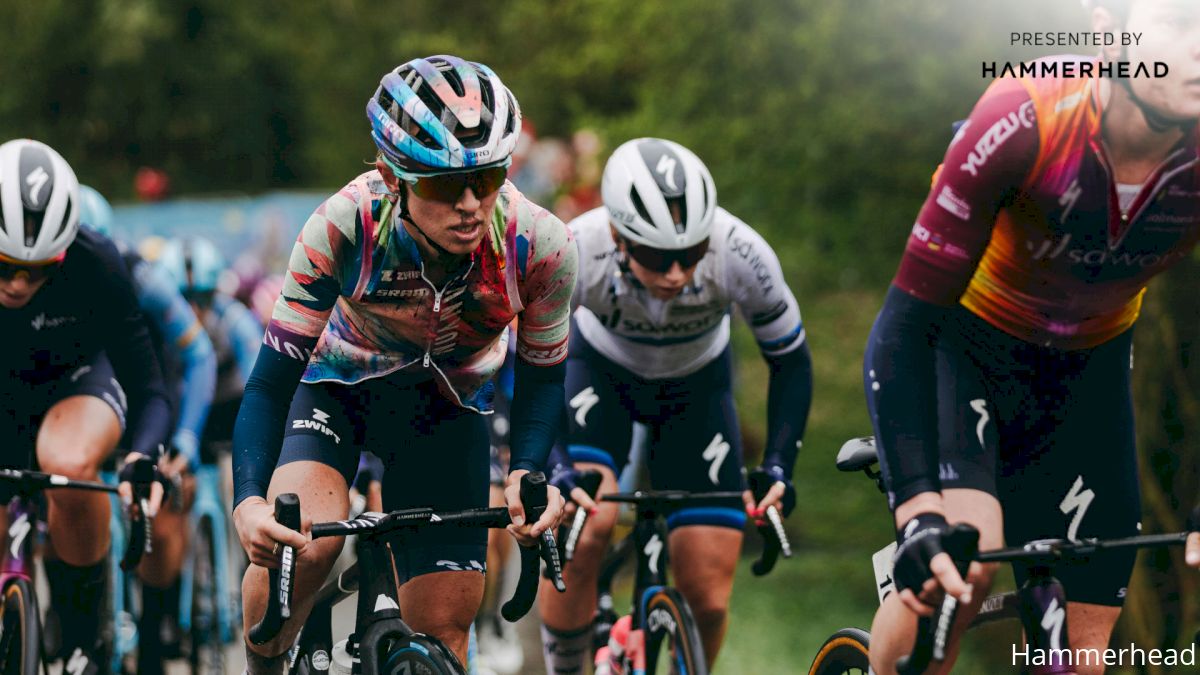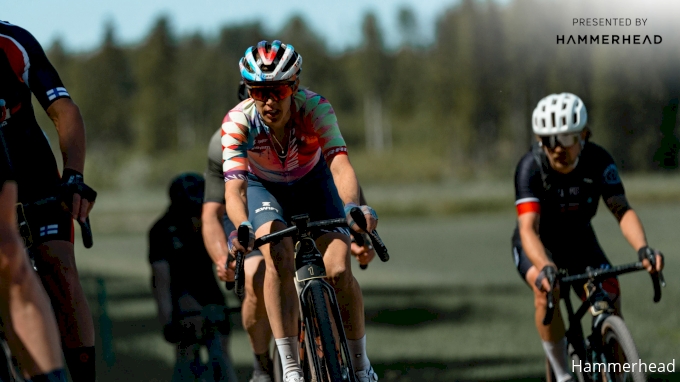CANYON//SRAM And Karoo 2 One Step Ahead In Tour de France Femmes Prep
CANYON//SRAM And Karoo 2 One Step Ahead In Tour de France Femmes Prep
CANYON//SRAM Racing's Kasia Niewiadoma and Tiffany Cromwell explain how Hammerhead's Karoo 2 gives them a vital edge when training and racing.

This article is sponsored by Hammerhead Karoo 2 - who builds technology to inspire and empower all people to unlock their athletic potential through cycling. Visit here to get the Karoo 2 today!
In days not too long gone by, professional racers would spend their pre-race evenings scanning through the pages of the official road book to get an idea of what was in store for them the next day. In addition to a map on which they might be able to mark points where they'd need to be attentive due to, for instance, a likely shift in the wind, there would usually be some rudimentary information about the climbs, which didn't tend to extend beyond their length and average gradient.
Over recent seasons, however, route-finding and route-plotting have advanced rapidly thanks to developments in GPS-related technology, and this is typified in Hammerhead's Karoo 2. This head-unit is essentially a world atlas in a neat, lightweight and solid form that will not only expand your horizons, but will ensure that you'll never get lost again, and this applies to riders at any level, including those at the very top.
At CANYON//SRAM Racing, the Karoo 2 has quickly become a vital part of every rider's equipment and set-up. It's an essential tool during training, race preparation and, of course, when competing. It's a reliable and pinpoint monitor of where a rider is both physiologically and geographically, its importance exemplified during the team's build-up to its biggest objective of the season, the Tour de France Femmes avec Zwift.
Third in the inaugural edition of the race last year, CANYON//SRAM Racing leader Kasia Niewiadoma leaned heavily on the Karoo 2 during team recons for what will be this year's decisive stages in the Pyrenees, and notably on the planned summit finish at the legendary Col du Tourmalet. "I've never raced up the Tourmalet or any of the mountains nearby, although I had ridden up it before," the 28-year-old Polish rider explains. "The Karoo 2 was absolutely vital for us because we needed to know all the time what was ahead, what the gradient was like when we were climbing, where the steepest sections are."
There's always plenty of debate about which of the Tourmalet's almost equidistant flanks is the tougher. The western side from Luz-Saint-Sauveur is more consistent in its gradient, while the eastern begins gently, then rises fiercely from almost exactly the point where, during the 1913 Tour de France, Frenchman Eugène Christophe's front forks broke, famously requiring him to carry his bike down the pass for six miles until he found a forge to where he could repair them. Approaching the ski resort of La Mongie, the gradient rises into double figures and remains there and thereabouts for the final seven kilometers to the summit. "It's super hard and showed us that we'll have to alter our training and preparation to cope. It was vital to have that knowledge and to have it stored so that we can draw on it again," says Niewiadoma.
"It's so useful to see how the gradient's changing using the CLIMBER feature on the Karoo 2, to be able to pace your climbing speed, but also to know when to expect an attack or even when you might be able to make them yourself," she continues. "You can look at the maps and profiles that the race organizers give you but they're often not all that accurate, and the Karoo 2 fills in all of the gaps when you need that kind of detail."
Following what is sure to be a critical stage to the top of the Tourmalet, the Tour de France Femmes will conclude with a time trial in and around the city of Pau, and a very different kind of test. Niewiadoma explains that the Karoo 2 will be equally important on both days, although she will set hers up differently on each of them. "When I'm racing, I have the Karoo 2 set to show the climb's gradient, the distance, the time, the power average and the power per 10 seconds. These are the most crucial figures that I need to see," she explains. "It's different in a time trial, simpler in a way. I have the Karoo 2 set so that it just shows speed and distance."
While Niewiadoma has her sights set on the Tour's fabled yellow jersey, her CANYON//SRAM Racing teammate Tiffany Cromwell has her focus on wholly different terrain. Now in her 14th professional season, the 34-year-old Australian is one of the racing elite who has switched to gravel racing, which she now combines with her road commitments. One of the few things that remains unaltered about her set-up for each discipline is the Karoo 2.

Cromwell confesses that she's traveling so much this season that she'd be lost without her Hammerhead. Over the course of a fortnight in late May and early, she won the Gralloch Scotland, then traveled to the US and won the prestigious Unbound Gravel title in Kansas, then clinched victory in the inaugural edition of FNLD GRVL event in Finland that she co-organised with her partner, F1 driver Valtteri Bottas. "The maps are a key element of the Karoo 2 for me," says Cromwell. "The unit has basically changed the way that we can train. You don't need to have your phone in your back pocket and if you're somewhere new you don't get lost."
The data pages are vital for her too. Like Niewiadoma, she uses different ones when training and racing, although she says dials the information down. "When I'm training, I like to have heart rate, cadence, distance to go, those sorts of things and I tend to use the Climber feature too. Sometimes I like it, sometimes I don't, depending on what my headspace is. Sometimes you don't want to see that there's a 20k mountain ahead of you, counting down each tenth of a kilometer to the summit," she says, laughing. "But at other times, you do want to see that. It's incredibly useful. Another thing I like is the take me home the quickest way feature. I don't use it often but sometimes it's so useful to know the shortest route."
When she's in gravel mode, Cromwell downloads routes to her Karoo 2 to avoid the obvious repercussions that could arise from getting lost in a remote or wilderness area. "The data on gravel routes is still developing, but it will soon be as it is for the road as all the information gets collated from users across the globe. I'm relishing that. For now, though, I always upload the gravel race routes to my Hammerhead because you get so much detail that's essential when racing. I'd never be without it," Cromwell affirms.
The Karoo 2 does already have one feature that's particularly useful for riders wanting to switch between road and gravel riding. The unit allows you to set your surface type preference, which makes for easier route building and even re-routing when the occasion calls for it. Even though I ride almost entirely on the road, I've benefited from this feature myself as there are myriad tracks and lanes through the hills and farmland where I live in the French Pyrenees, many of them linking surfaced roads via a short gravel section that you can pick your way through relatively easily on skinny tires. Saved in the easy-to-organize route library on my Karoo 2, these sections have extended my ride options considerably, opening up new riding terrain without requiring a lot of extra time in the saddle.
Ultimately, it's features like this that make Hammerhead's head unit such an essential part of your riding set-up. Even when you're in a country region that's completely new to you, the Karoo 2 is the ideal guide. It's ultra-reliable, flexible and easy to use. You'll be lost without one.